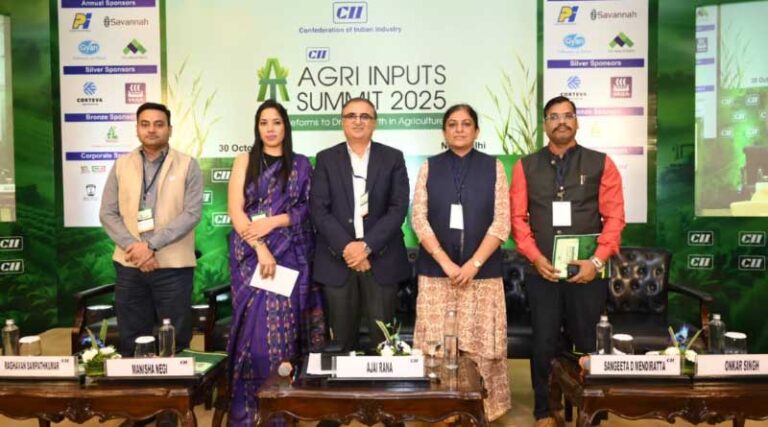
India Must Double Farm GDP to $1 Trillion to Reach $10-Trillion Economy by 2047: Experts at CII Summit
31 October 2025, New Delhi: India’s agriculture sector must double its contribution to the national economy from about $450 billion to nearly $1 trillion for the country to achieve a $10-trillion economy by 2047, according to the leadership of India’s agri-input sector. They noted that while agriculture employs about 46 per cent of India’s workforce, its value addition remains low, highlighting the need for policy reforms, technology adoption, and private-sector participation to support growth.
The remarks were made at the Confederation of Indian Industry (CII) Northern Region Agri Inputs Summit on “Policy Reforms to Drive Growth in Agriculture,” which brought together policymakers, industry representatives, scientists, and farmer groups to outline a roadmap for reform.
Ajai Rana, Chairman, CII Northern Regional Committee on Agriculture and Chairman, Federation of Seed Industry of India, said agricultural growth must be accelerated through improved seed technologies and greater private sector participation. “Agriculture employs nearly half of India’s people but contributes about 15 per cent to GDP. To reach $10 trillion, agriculture’s share must increase from roughly $450 billion to $1 trillion,” he said.
He cited India’s progress in hybrid corn adoption—from 15–20 per cent two decades ago to 90 per cent today—as evidence that technology can improve productivity when supported by policy. However, inconsistent state-level policies and temporary restrictions on crop technologies, he cautioned, continue to discourage investment.
Rana said that a clear, science-based policy framework could drive agricultural transformation, similar to the outcomes seen in infrastructure development. He suggested the creation of a national agricultural technology council, harmonisation of Centre–state regulations, and time-bound, evidence-based approvals for seeds and crop protection products.
Leaders at the summit called for a model combining traditional farming knowledge with modern science. Referring to the Prime Minister’s vision of Beej se Bazaar Tak, they reiterated the importance of the four Bs — Beej (seed), Beema (insurance), Bank (credit), and Bazaar (market) — as key elements of rural economic strength.
Raghavan Sampathkumar, Executive Director, Federation of Seed Industry of India, identified three main obstacles to reform: activism influence, ad-hoc interruptions, and arbitrary interpretations of laws and regulations. “Science must guide decisions. Policy actions should not be influenced by activism or sudden state-level bans without scientific basis. These interruptions prevent the industry from focusing on innovation,” he said. Sampathkumar called for a transparent, unified regulatory framework and accountability in decision-making.
📢 If You’re in Agriculture, Make Sure the Right People Hear Your Story.
From product launches to strategic announcements, Global Agriculture offers unmatched visibility across international agri-business markets. Connect with us at pr@global-agriculture.com to explore editorial and advertising opportunities that reach the right audience, worldwide.






